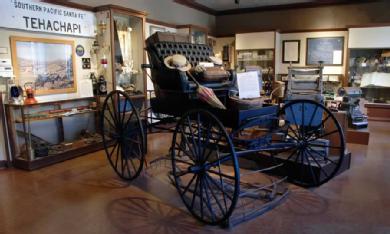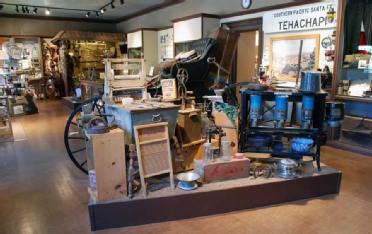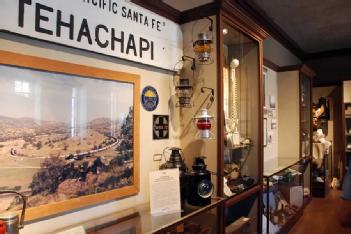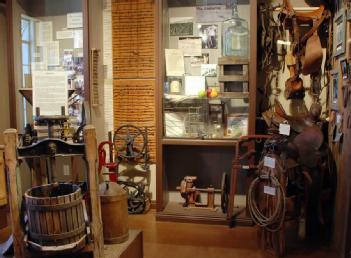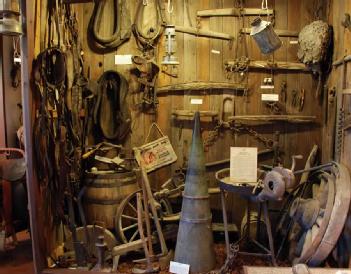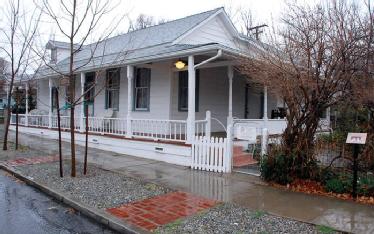
Tehachapi Heritage League Museum |
93561 Tehachapi, CA, United States of America (USA) (California) |
|
| Address |
310 S Green Street
|
| Floor area | unfortunately not known yet |
Heritage- or City Museum
- Mining
- Architecture
- Carriages
- Model Aircraft and Aviation
- Technical and functional models
- Lamps and Light
- Home Appliances
|
Opening times
|
|||||
|
Status from 06/2019
|
We don't know the fees. | ||||
| Contact |
|
||||
| Homepage | www.tehachapimuseum.org | ||||
| Location / Directions |
Tehachapi is a city in Kern County, California, in the Tehachapi Mountains, at an elevation of 3,970 feet (1,210 m) between the San Joaquin Valley and the Mojave Desert. Tehachapi is 35 miles (56 km) east-southeast of Bakersfield, and 20 miles (32 km) west of Mojave. |
| Description | Tehachapi Museum Even before you enter the Tehachapi Museum you will be impressed by a rare example of art history. The Museum structure was built in 1931 in the popular art deco architecture of that era. It serves as a branch of the Kern County Library system until 1982 when the Tehachapi Heritage League moved its museum operation to this location. American historian David McCullough said, “History is who we are.” As you explore the varied collections that fill the Tehachapi Museum you will come to appreciate how insightful those words are as it relates to our community. Tehachapi’s roots began with the Kawaiisu who arrived in this region about 1,500 years ago. While miners passed through on their way to California’s fabled gold rush, the first permanent settlers were ranchers and farmers. But it was the coming of the railroad in 1876 which created the present Tehachapi. The Museum’s collections are not only varied but unique in many respects as they offer you a glimpse of life in Tehachapi and its many generations. Errea House Museum Directly across the street from the Tehachapi Museum is another local treasure that provides visitors with a true look back at early life in Tehachapi. The Errea House is the oldest house in the area, dating to the 1870s. The house, built in what is now called Old Town 4 miles west of the current city, is listed on the National Register of Historic Places. About 1900, the house was moved on log rollers pulled by horses or mules to its present location. Its refurbished parlor, dining room, kitchen, bathroom, bedrooms and covered porch gives visitors a view of life in rural Tehachapi, 1900s–1930s. The old–fashioned garden, located on the north side of the building, is being restored to resemble the type of garden found by homes in Tehachapie in the 1900s to 1930s. The house is named after a Spanish Basque family who lived in the house for over 70 years. |
[dsp_museum_detail.cfm]
| Data Compliance | More Information |
 tehachapimuseum.org
tehachapimuseum.org 